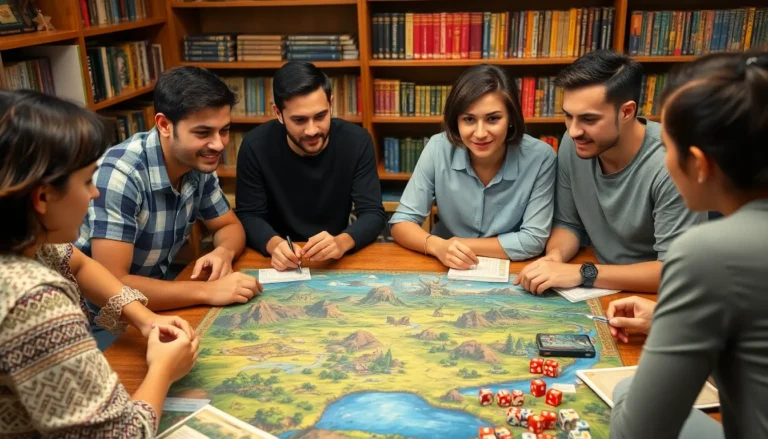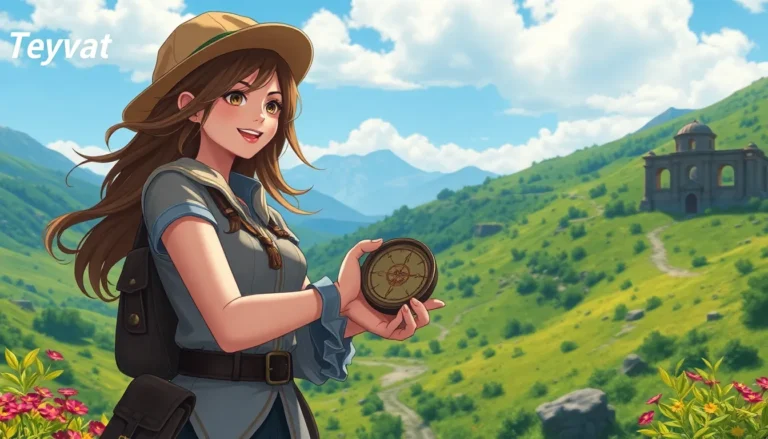In the vast world of RPGs, tech trees are like the buffet of character development—there’s something for everyone, but choosing the right dish can be overwhelming. Picture this: you’ve just leveled up, and your character stands at a crossroads, contemplating whether to wield a flaming sword or master the art of potion brewing. Tech trees map out these choices, guiding players through a labyrinth of skills and abilities that can make or break their journey.
Table of Contents
ToggleOverview of Tech Trees in RPG
Tech trees in RPGs map out the progression of skills and abilities, guiding players through their character’s development. Each branch represents distinct paths for enhancing gameplay, creating unique choices for players. Leveling up can introduce an array of decisions, such as selecting between offensive abilities or defensive strategies.
Players often encounter a variety of tech trees that reflect different playstyles. Some trees focus on combat mechanics, while others enhance crafting or magical abilities. For instance, a combat tree might allow a character to choose between increased damage or improved accuracy. Conversely, a crafting tree may provide options for creating powerful potions or advanced weaponry.
The structure of tech trees contributes to gameplay depth. Players engage with the strategic element of planning their progression. As they navigate through branches, they determine which abilities align with their preferred playstyle. This decision-making process fosters investment in their character’s growth.
Visual representation enhances understanding of tech trees. Most RPGs display these trees graphically, allowing players to see potential paths at a glance. This design facilitates quick comparisons, helping players visualize the impact of their choices. Moreover, some games incorporate requirements for advancing to specific branches, adding an additional layer of strategy.
Tech trees are integral to the RPG experience, empowering players to tailor their characters to individual preferences. Each choice reflects personal strategy, providing a sense of ownership over character development. Knowing this, players can embrace their journey, confident in how tech trees shape their adventures.
Types of Tech Trees

Tech trees in RPGs come in various forms, each offering unique progression methods for players. Understanding these types helps players choose paths that align with their playstyle.
Linear Tech Trees
Linear tech trees present a straightforward path of progression. Players progress through skills in a predetermined order, unlocking each ability before moving to the next. This structure ensures that players can focus on mastering one specific area before advancing. For example, a warrior must learn basic melee attacks before unlocking advanced combat skills. Games featuring this structure often simplify decision-making, allowing players to concentrate on enhancing their character’s core abilities. Although they lack flexibility, linear tech trees guarantee a clear developmental direction.
Branching Tech Trees
Branching tech trees allow more flexible choices, resulting in diverse gameplay strategies. Players can decide between multiple paths, choosing skills that fit their unique preferences. A mage, for instance, might specialize in fire spells or opt for healing abilities, creating varied character builds. This structure promotes exploration and experimentation within the game. Players face decisions at each level, influencing their character’s abilities and style of play. While branching tech trees introduce complexity, they enhance player agency, making every choice impactful in defining character growth.
Benefits of Tech Trees in RPG
Tech trees significantly enhance the player experience in RPGs by providing clear pathways for character development. Players can explore diverse options that align with their playstyle and preferences.
Enhanced Player Choices
Tech trees facilitate a range of character customization options. Players decide how to specialize, whether they prefer melee combat, spellcasting, or crafting skills. Each choice reflects their gaming style, allowing for unique character builds. Access to various branches ensures that no two gameplay experiences are alike. Choices become more than mere stats; they define each player’s journey through the game.
Strategic Depth
Strategic depth arises from the structured progression within tech trees. Players must plan ahead, considering not just current abilities but also future paths. Unlocking skills often requires specific prerequisites, prompting thoughtful decision-making. Players evaluate advantages and trade-offs, ensuring that every decision carries weight. This encourages them to experiment with various strategies and adapt their approach as the game evolves. In tackling challenges, the synergy between chosen skills fosters a more immersive experience, emphasizing the importance of smart character development.
Popular RPGs Featuring Tech Trees
Various RPGs showcase tech trees, enhancing player engagement through unique progression systems. Here are two notable examples.
Game Title 1
“Path of Exile” features an extensive passive skill tree that emphasizes customization. Players navigate a sprawling grid representing various character abilities, allowing them to build diverse character types. Every node offers unique enhancements, which facilitates strategic planning for optimizing damage, defense, and other attributes. This unorthodox design encourages experimentation, making each playthrough distinct. With thousands of possible builds, players continually discover new combinations, enhancing replayability and engagement. The depth of the passive skill tree significantly enriches the overall experience, providing ways to tailor characters according to personal playstyles.
Game Title 2
“Final Fantasy X” incorporates a Sphere Grid system, allowing players to develop characters in a unique manner. Players progress through a network of spheres, unlocking abilities and attributes as they advance. Every character starts in a specific section but can venture into others, promoting flexibility. Players can choose paths aligning with desired strategies, whether focusing on offensive magic or defensive skills. This interconnected structure introduces decision-making aspects, resulting in various character builds. In addition, the Sphere Grid enhances personal investment in character development, creating a rewarding growth experience with each level gained.
Future Trends in Tech Trees
Developers increasingly incorporate advanced technologies into tech trees to enhance player experience. Artificial intelligence helps generate personalized character progression paths based on individual player behaviors. This evolution makes gameplay more adaptive, offering tailored recommendations for skills and abilities.
Emerging trends focus on integrating narrative elements into tech trees. This approach aligns character choices with story development, creating a sense of consequence for player decisions. Engaging narratives foster emotional investment, allowing players to feel the weight of their choices.
Players also see a rise in hybrid tech trees that blend linear and branching structures. This combination provides clarity while maintaining flexibility, appealing to various playstyles. Each decision impacts gameplay, promoting exploration and unique character builds.
Cross-platform play affects tech tree designs. Developers now aim for consistency across devices, ensuring players can engage in character development seamlessly, regardless of their chosen platform. This trend enhances accessibility and fosters a unified gaming experience.
Real-time feedback systems are also gaining traction. Players receive instant updates on how their choices influence character progression, fostering a more interactive environment. This feature aids strategic planning and encourages experimentation.
Finally, community-driven tech trees are emerging. Players can contribute ideas, vote on potential upgrades, or suggest new skills, leading to collaborative development. Such input creates a dynamic tech tree ecosystem, keeping gameplay fresh and engaging.
These trends indicate that tech trees in RPGs continue to evolve, profoundly impacting how players engage with character development.
Tech trees in RPGs are essential tools that shape player experiences and character development. They provide a structured approach to skill and ability progression while allowing for diverse playstyles. By offering both linear and branching options, tech trees encourage strategic thinking and experimentation.
As RPGs evolve, so do tech trees, integrating advanced technologies and narrative elements that enhance player engagement. The future promises even more innovation, with community-driven designs and real-time feedback systems. This ongoing evolution ensures that tech trees will remain a vital aspect of RPGs, enriching gameplay and fostering a deeper connection between players and their characters.






